Dubai’s new autonomous trams to run on ‘virtual tracks’
Dh16 billion Roads Improvement Plan for 2024-2027 explained

Dubai has set out plans to introduce all-electric, trackless, and autonomous trams across eight key locations in the emirate, as part of a broader strategy to tackle rising congestion and support sustainable transport.
The initiative was announced by Sheikh Hamdan bin Mohammed bin Rashid Al Maktoum, Crown Prince of Dubai, Deputy Prime Minister and Minister of Defence, to celebrate the 10th anniversary of the Dubai Tram.
During a recent visit to the Roads and Transport Authority (RTA) headquarters, Sheikh Hamdan instructed officials to proceed with studies on the implementation of this advanced transport system.
During my visit to @rta_dubai’s headquarters, I reviewed its AED16 billion Main Roads Development Plan 2024-2027, featuring 22 major projects. I also reviewed the progress of RTA’s initiatives in public and shared transportation, designed to boost service quality and efficiency… pic.twitter.com/dCX3Tj0XMh
— Hamdan bin Mohammed (@HamdanMohammed) November 3, 2024
Trackless tram
The proposed autonomous trams will run on “virtual tracks,” using cameras to follow painted lines within dedicated lanes.
Dubai Media Office reports that each tram will feature three carriages with a maximum capacity of 300 passengers, capable of reaching speeds of up to 70kph, with typical operating speeds between 25 and 60kph.
A single charge allows each tram to travel up to 100km, underscoring Dubai’s ambition to harness cutting-edge technology for eco-friendly, efficient public transport.
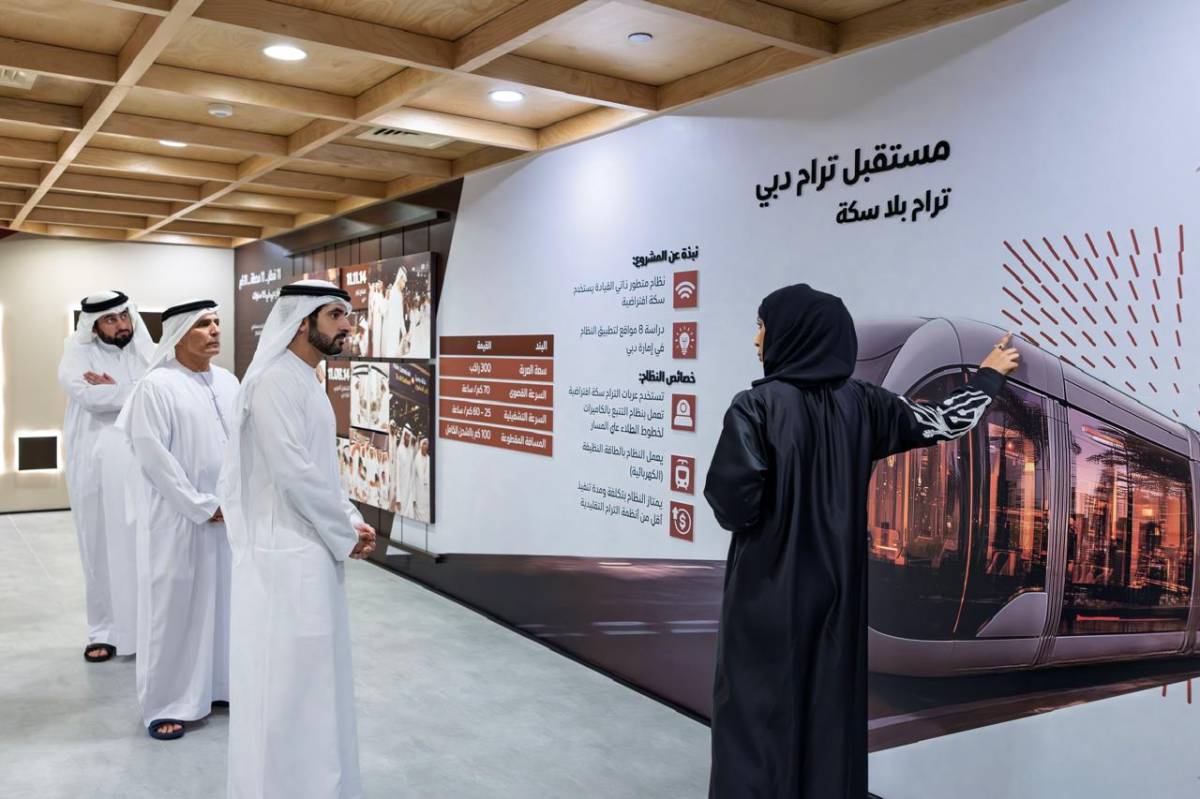
Expansion of road network
Dubai’s ambitious transit system is just one component of the “22 major projects” under the Dh16 billion Main Roads Development Plan 2024-2027. This extensive plan, reviewed by Sheikh Hamdan during his recent visit to the Roads and Transport Authority (RTA), encompasses significant upgrades to Dubai’s road network, designed to boost capacity and reduce travel times across the emirate.
As part of this vision, key expansions will include upgrades to the Umm Suqeim and Al Qudra Roads, projected to increase vehicle flow from 8,400 to 12,600 vehicles per hour. These enhancements form a critical response to Dubai’s rising population and the corresponding increase in daily traffic.
In a comprehensive presentation, the RTA highlighted Dubai’s impressive progress in public transport and infrastructure development over the years. Public transport currently serves 2.2 million riders daily, marking a substantial rise in usage since 2006. Over this period, Dubai’s road network expanded from 8,715 lane-kilometres to 18,990 lane-kilometres—a 117% increase in road infrastructure.
The capacity for vehicles crossing Dubai Creek has also grown exponentially. The number of lanes across the creek rose from 16 to 61, a 281% expansion, while vehicle bridges and tunnels saw remarkable growth from 129 to 1,070, representing a 729% increase. Pedestrian infrastructure has likewise flourished, with pedestrian bridges and tunnels increasing from 26 to 129, supported by the Dubai Metro and Dubai Tram infrastructure—a 396% growth.
Cycling facilities have also undergone unprecedented development, expanding from a mere 9 kilometres to 557 kilometres of tracks, an extraordinary 6,088% increase. Looking forward, the RTA has outlined plans to further extend cycling tracks to connect popular coastal areas like Jumeirah, Al Sufouh, and Marina with external routes in Al Qudra, Saih Al Salam, and Nad Al Sheba through new connections in Al Barsha and Dubai Hills.
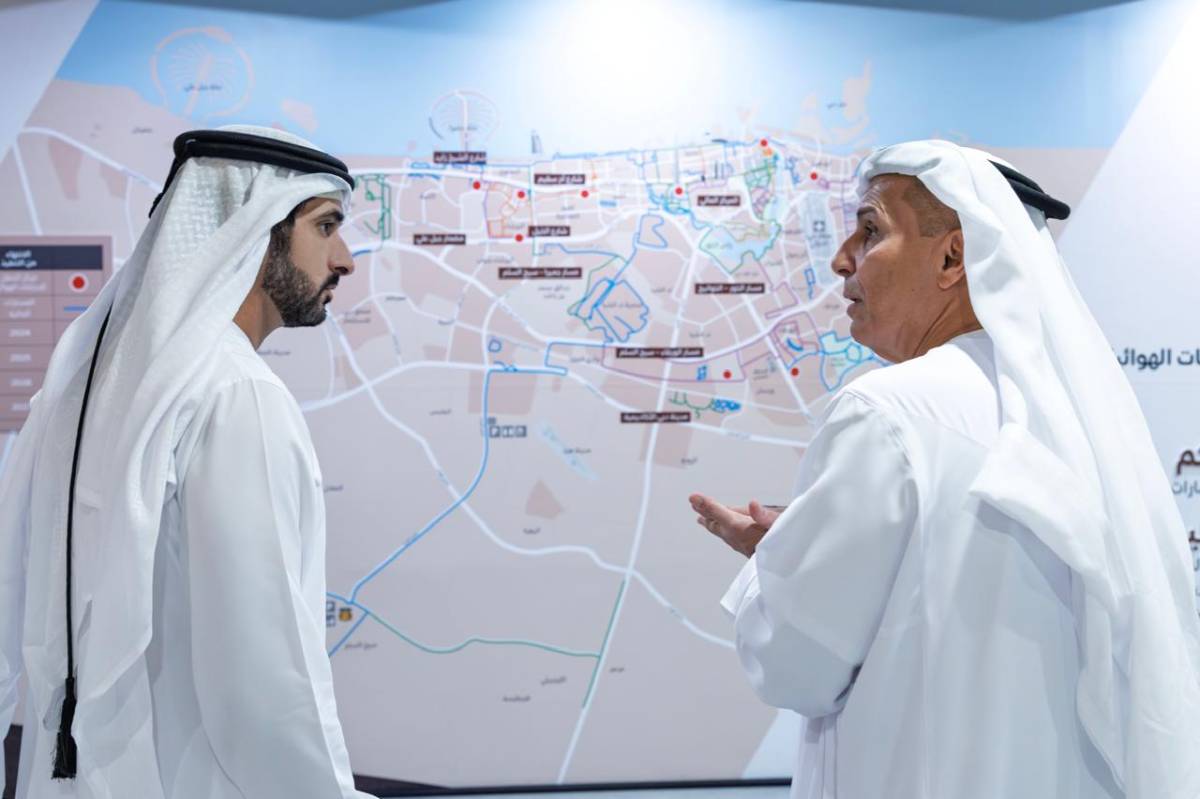
Traffic overview
Dubai’s rapid population growth has been accompanied by a significant surge in vehicle numbers, a trend closely monitored by Sheikh Hamdan and Mattar Al Tayer, Director General of the Roads and Transport Authority (RTA).
The emirate now handles around 3.5 million vehicles on its roads during daytime hours, representing a 10% increase in registered vehicles over the past two years, which far outpaces the global average growth rate of 2 to 4%.
Dubai's population is expected to grow at an annual rate of 3.6% until 2030, placing continued pressure on the road network. However, despite this rise in vehicle numbers, Dubai ranks impressively in terms of journey time efficiency. According to the 2023 TomTom Global Traffic Index, the emirate achieved an average journey time of 12 minutes and 50 seconds for a 10-kilometre trip within its central business district. This is considerably shorter than in many other major global cities, where comparable trips take significantly longer—16 minutes and 50 seconds in Singapore, 19 minutes in Montreal, 21 minutes in Sydney, 22 minutes in Berlin, and over 36 minutes in London.
Development projects
Latifa bint Hamdan Street: Sheikh Hamdan was also briefed on RTA's plans, including the Latifa bint Hamdan Street development set to commence next year. This project spans 12,200 metres from its intersection with Al Khail Road to Emirates Road, featuring 8,100 metres of bridges. It aims to accommodate over 1 million residents, increasing capacity by approximately 16,000 vehicles per hour in both directions and reducing travel time by 15 to 20%.
Al Mustaqbal Street: The development plans for Al Mustaqbal Street and the Trade Centre Roundabout were also reviewed. The project includes constructing bridges and tunnels totalling 6,200 metres, increasing road capacity from 9,000 to 12,000 vehicles per hour—a 30% increase. Travel time will be reduced from eight minutes to three minutes and 30 seconds, benefiting over half a million residents and visitors. The contract for the Trade Centre Roundabout development has been awarded, including five bridges totalling 5,000 metres to ensure smooth traffic flow. The roundabout will be converted into a surface-level intersection controlled by traffic signals, cutting delays from 12 minutes to just 90 seconds. The contract for the Al Mustaqbal Street development will be awarded by the end of the year.
Umm Suqeim and Al Qudra Streets: The Umm Suqeim and Al Qudra Streets project covers a 16,000-metre stretch from the Jumeirah Street intersection to Emirates Road, involving the development of four intersections, 2,500 metres of bridges, and 2,000 metres of tunnels. This will increase road capacity from 8,400 to 12,600 vehicles per hour and reduce travel time from 46 minutes to just 11 minutes, benefiting over 800,000 residents.
Al Fay Street: The Al Fay Street Development Project extends from Al Khail Road at its intersection with Sheikh Mohammed bin Zayed Road to Emirates Road. It includes 12,900 metres of road construction and five intersections, along with 13,500 metres of bridges, providing additional capacity for approximately 64,400 vehicles per hour, benefiting around 600,000 residents.
Al Safa Street: The Al Safa Street development stretches from Sheikh Zayed Road to Al Wasl Road, featuring 2,100 metres of tunnels, including a two-lane tunnel for direct access to the City Walk project, and 650 metres of bridges. These upgrades will increase capacity from 6,800 to 9,400 vehicles per hour and reduce travel time from 20 minutes to just two minutes, benefiting approximately 358,000 residents.
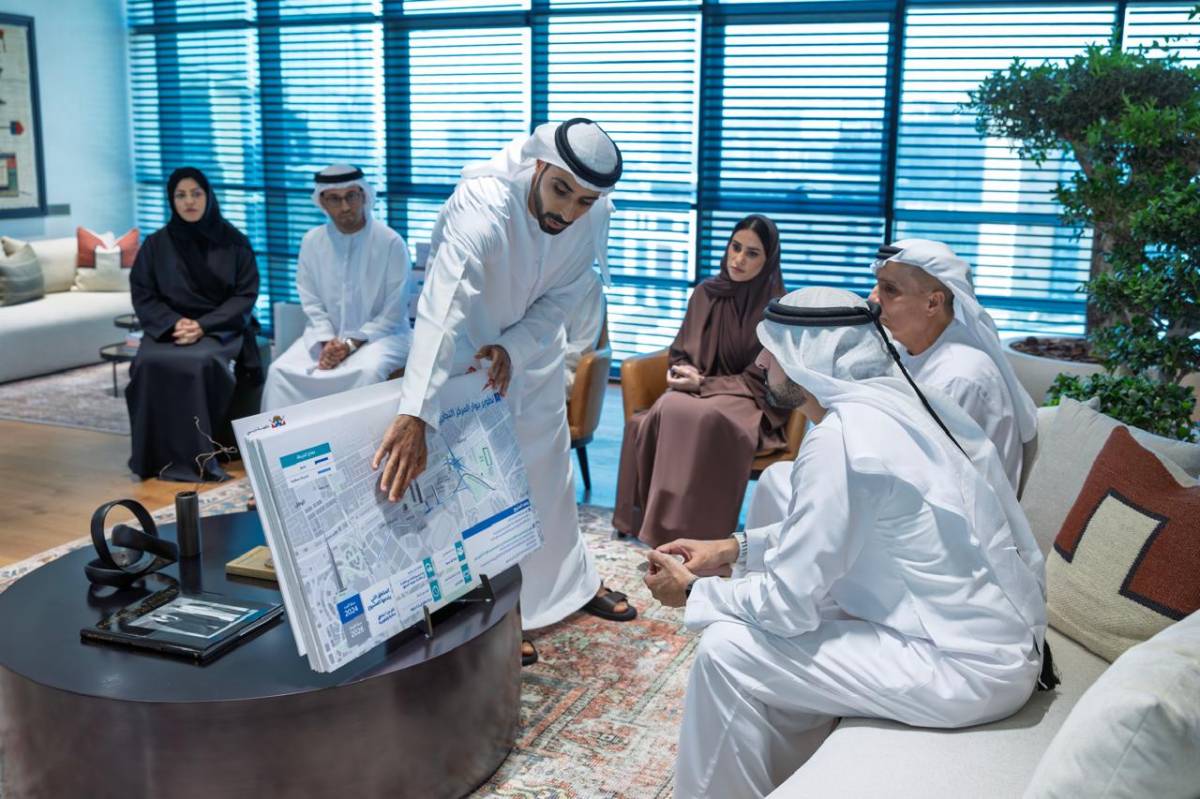
Dedicated bus & taxi lanes
This extension will include six new routes covering a total of 13 km, increasing the overall length of dedicated lanes to 20 km by 2026. The initiative aims to enhance public transport efficiency, facilitating smoother and more reliable transit across the city and aligning with Dubai's commitment to sustainable transportation.
The extension of these lanes is expected to yield significant benefits, including a projected 10% increase in ridership and a 42% improvement in bus arrival rates. Additionally, bus travel times are anticipated to be reduced by 41%, encouraging greater use of public transport and alleviating traffic congestion. These dedicated lanes are also integral to Dubai's Self-Driving Transport Strategy 2030, with estimated economic benefits of Dh 2.3 billion over the next decade.
Self-driving bus: Further enhancing this initiative, an autonomous bus equipped with cutting-edge AI and self-driving technologies has been introduced. Designed for first and last-mile transport, this bus connects main transit hubs with final destinations at a speed of 40 km/h. With a capacity of 10 to 20 passengers, it represents a practical solution for sustainable urban transport, supporting the overall goal of creating a more efficient and environmentally friendly transport system in Dubai.
Commercial transport platform
As part of the broader development strategy, Dubai’s RTA is also focused on streamlining commercial transport. A new digital service, Commercial Transport (Logisty) Platform, will be introduced to support freight and commercial transit, optimising logistics across the emirate.
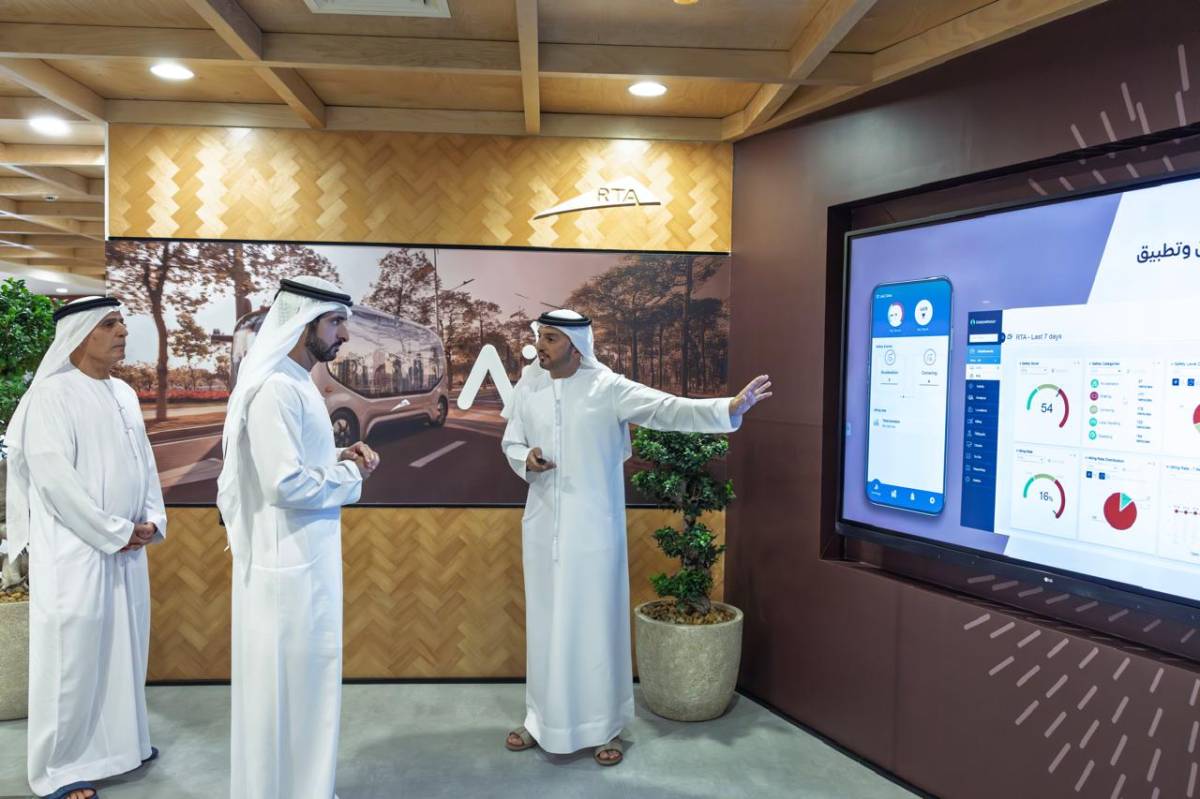
The platform manages commercial vehicle fleets, providing on-demand booking and tracking, vehicle and driver verification, and a reliable registration database. It supports Dubai’s Commercial and Logistics Land Transport Strategy 2030, connecting customers with commercial transport providers.
Smart cycling tracks scanning
In an effort to encourage cycling and enhance safety, Dubai plans to implement smart scanning technology on cycling tracks. The dedicated cycling tracks network in Dubai currently spans 557 kilometres and supports an estimated 44 million cycling trips annually, along with 2.3 million soft mobility trips.
As part of the Smart Cycling Tracks Scanning initiative, a specially equipped vehicle will be deployed to scan 120 kilometres of cycling tracks within just four hours, a significant improvement over the traditional visual assessment method, which covers only 10 kilometres in the same timeframe.
Safe driving
The RTA remains committed to prioritising road safety in the face of increasing traffic volumes. To enhance safety, new initiatives are being implemented, including improved monitoring of speed limits and stricter enforcement of traffic regulations. Additionally, education campaigns and safety workshops are planned to promote safe driving practices among motorists in the emirate.
A key feature of these efforts is the ‘Green Road’ safe driving system, which provides real-time alerts to drivers operating the 1,395 public transport buses in Dubai regarding traffic safety breaches. This system monitors driver behaviour, including sharp turns, speeding, sudden braking, lane changes, and unsafe acceleration. As a result, it has significantly improved safety, achieving a 54% reduction in risk indicators and a 47% decrease in traffic violations.
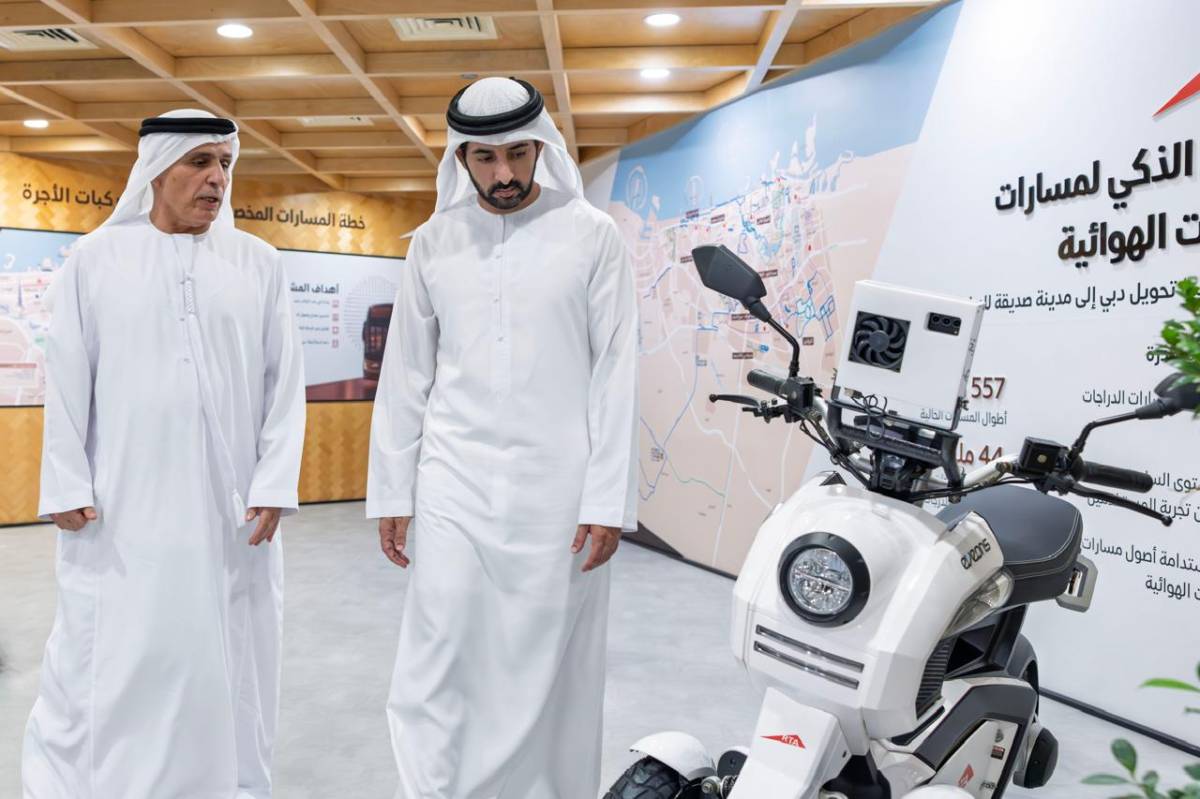
Smart control centre
Dubai’s RTA has also announced upgrades to its Smart Control Centre, which monitors and manages the emirate’s traffic flow. This state-of-the-art facility utilises AI and data analytics to track congestion and respond quickly to incidents.
Performance metrics from the Smart Control Centre, which opened in 2021, highlight its effectiveness in monitoring real-time violations by drivers of transport vehicles, thereby enhancing inspection efficiency. The centre automates 47 out of the 124 total violations and has recorded 367,000 violations since its inception, reflecting its vital contribution to maintaining road safety and traffic order in Dubai.
Academic Scholarships
In a bid to cultivate talent in transport and urban planning, the RTA has introduced a new academic scholarship programme aimed at providing financial support to students pursuing careers in relevant fields. As part of these efforts, there has been a focus on training and qualifying Emirati talent in advanced technologies, including artificial intelligence, the Internet of Things (IoT), cybersecurity, and big data management.
To date, 44 employees and students have been sponsored to pursue academic studies leading to PhD, master’s, bachelor’s, and professional diploma qualifications in areas such as AI, big data, data management and analysis, and computing sciences. Furthermore, RTA offers scholarships for high school graduates interested in fields like computer science, cybersecurity engineering, AI, and machine learning.
In addition, the RTA has provided 375 specialised and professional training courses to over 1,400 trainees across nine advanced technology programmes, reinforcing its dedication to enhancing skills and knowledge within the sector.